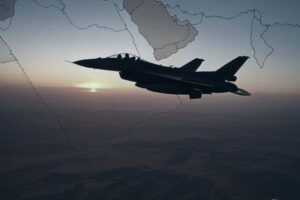
The Iran axis still exists on paper. But in reality, Tehran’s network of terror militias is fractured, degraded and increasingly irrelevant.
Iran’s grand plan was clear: if it clashed directly with Israel, its proxies would open additional fronts, attack Israel from multiple directions and stretch IDF resources thin.
But none of this materialized. No regional war, no coordinated fronts.
Hezbollah, long considered Tehran’s most powerful proxy, suffered staggering losses in the past year. Israel wiped out its senior leadership, dismantled its entire array of border outposts, and crushed its financial network.
With its arsenal significantly depleted, reconstruction stalled, legitimacy fading and confidence crushed, Hezbollah is no longer the regional heavyweight it once was.
In Gaza, the IDF reduced the Hamas army to fragmented guerrilla cells. The group’s leadership is decimated, its units dismantled, and its only contribution during the Iran-Israel war was a single rocket.
At this time, Hamas is no longer capable of coordinated combat, launching large-scale assaults on Israel, or backing Tehran in a regional fight. The Gaza terror base that existed on October 7 is gone.
The Houthis in Yemen are still around, but launched just 1-2 missiles at Israel during the Iran war, a dramatic drop in activity. Whether due to Israeli and US strikes, arms shortages, or fear of escalation, the Houthis hardly contributed anything to the fight.
Why did the axis collapse?
Multiple factors converged to shatter Iran’s proxy network and regional vision:
Military attrition: Israeli strikes degraded key proxy capabilities.
Financial disruption: Tehran’s cash pipelines were severely disrupted, leaving groups like Hezbollah short on resources.
Strategic misalignment: Each proxy faced local priorities, none aligned with Iran’s timing or goals.
Psychological impact: Israel’s overwhelming dominance deterred further escalation.
Iran’s failure to activate its proxy network at a critical moment gravely weakened its deterrence and ability to project power in the region. For Israel, this was a strategic win: the multi-front threat has been dismantled, at least for now.
For Iran, the dream of a unified, disciplined anti-Israel front has collapsed. Its proxies are battered, broke, and increasingly unwilling to fight. Tehran now stands more isolated and vulnerable than it’s been in long years.
What comes next? Rebuilding the axis will be slow and uncertain. Tehran may need to shift to a new strategic posture. The Middle East may never look the same again.


